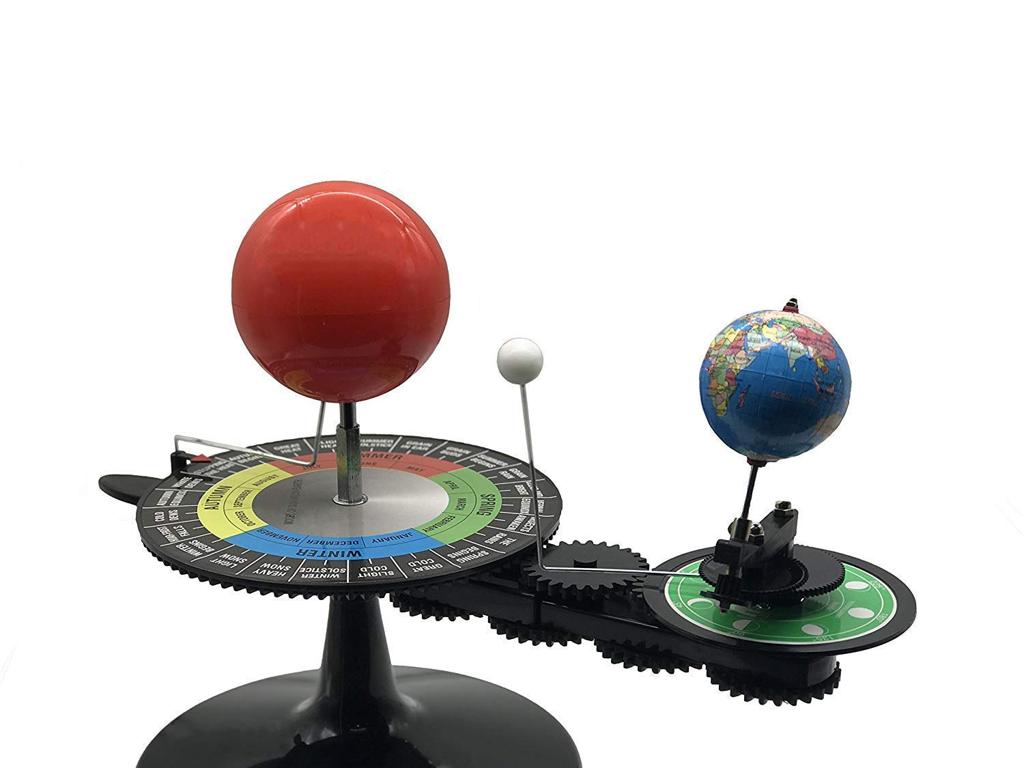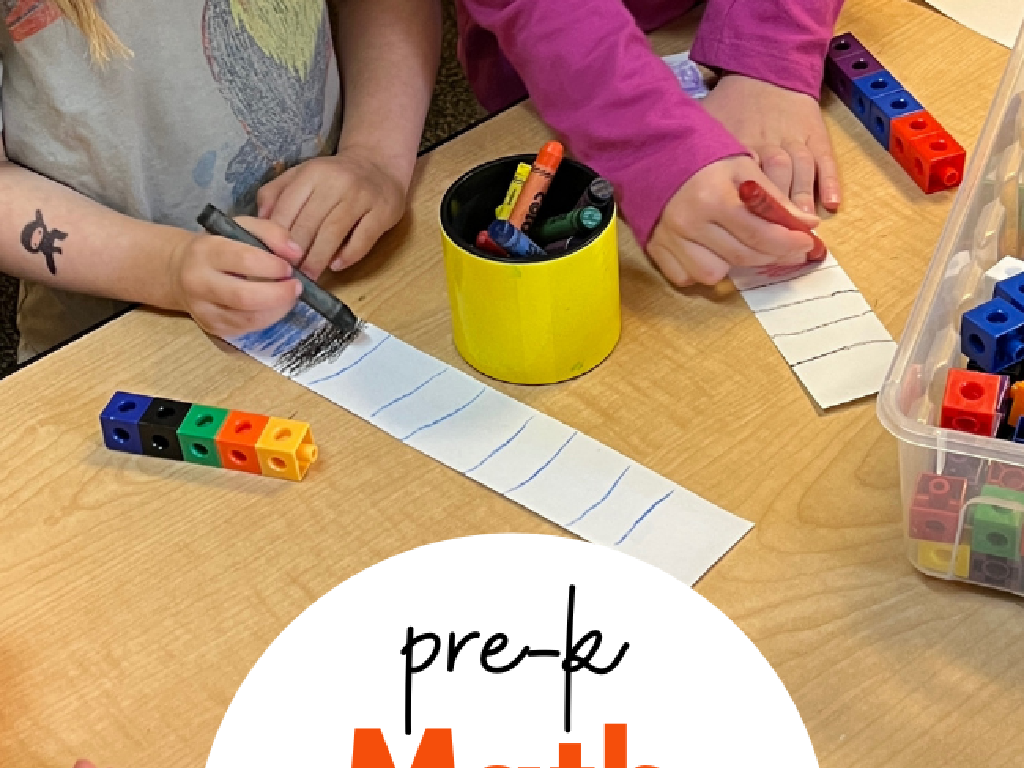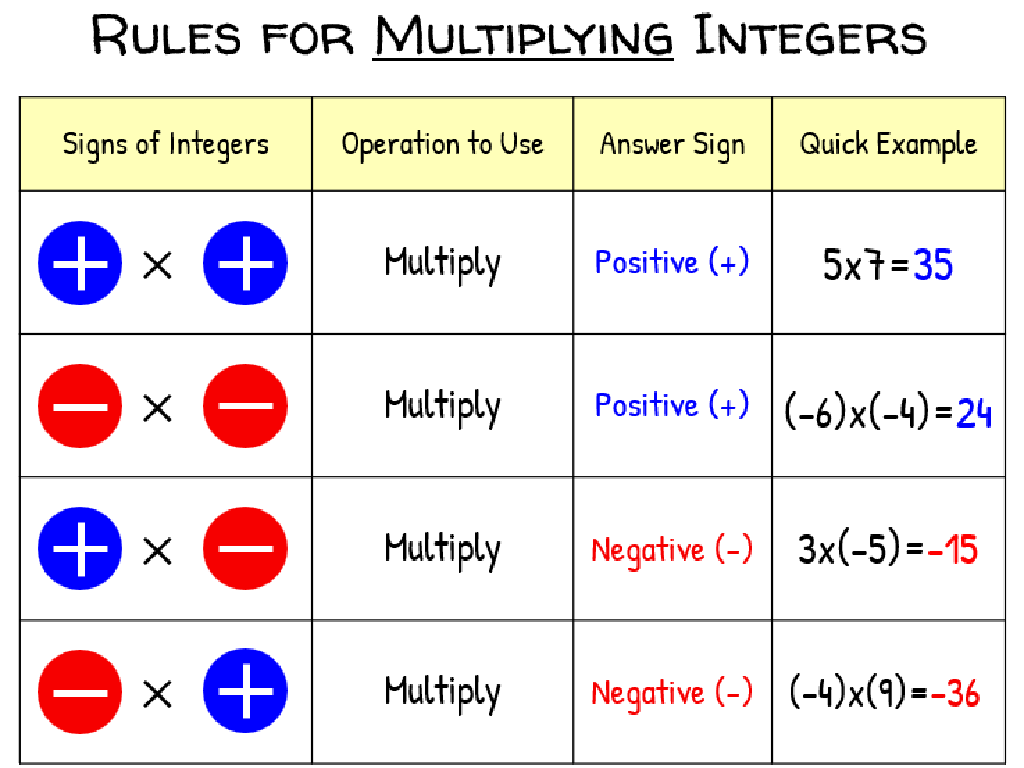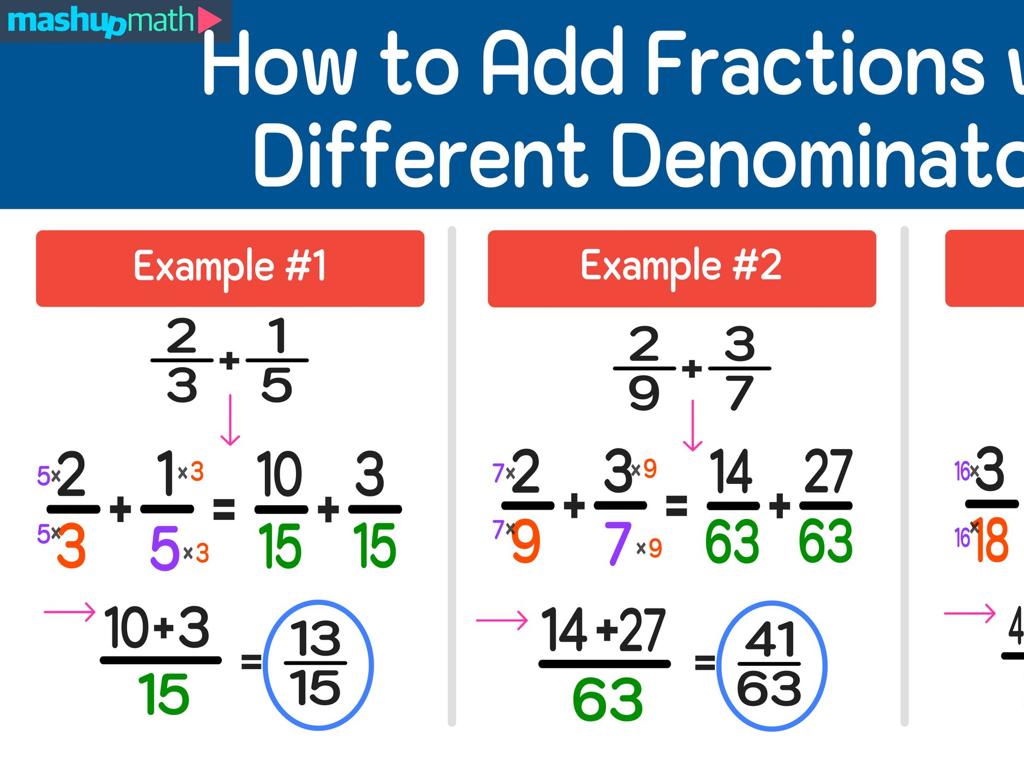Compare Fractions With Like Numerators Or Denominators Using Models
Subject: Math
Grade: Fourth grade
Topic: Compare And Order Fractions
Please LOG IN to download the presentation. Access is available to registered users only.
View More Content
Today’s Adventure: Comparing Fractions
– Understanding fractions
– Fractions represent parts of a whole, like a slice of pizza.
– Pieces of a whole
– Imagine a pizza cut into 8 slices. Each slice is a piece of the whole pizza.
– Like numerators explained
– Numerators are the top numbers. They are ‘like’ if they are the same.
– Like denominators explained
– Denominators are the bottom numbers. They are ‘like’ if they are the same.
|
Begin the lesson by explaining that fractions are a way to represent parts of a whole, using everyday examples like slices of pizza to illustrate the concept. Clarify that the numerator (top number) indicates how many parts we have, while the denominator (bottom number) shows how many equal parts the whole is divided into. Introduce the terms ‘like numerators’ and ‘like denominators’ and explain that they are fractions with the same top number (numerator) or the same bottom number (denominator), respectively. Use visual aids like fraction circles or bars to help students visualize and compare fractions with like numerators or denominators. This will set the foundation for more complex comparisons and operations with fractions.
Understanding Like Numerators
– Numerator: top number in a fraction
– Like Numerators: same top number
– Comparing fractions with like numerators
– Fractions with the same numerator are compared by their denominators; the larger the denominator, the smaller the fraction’s value.
– Examples with models
– For example, 3/4 vs. 3/8: Both have the numerator 3, but 3/4 is larger because 8 is a larger denominator than 4, meaning the pieces are smaller.
|
This slide introduces the concept of numerators and like numerators to fourth-grade students. Begin by explaining that the numerator is the top number of a fraction and represents how many parts we have. Then, clarify that like numerators are numerators that are the same in different fractions. Emphasize that when fractions have like numerators, we compare them by looking at their denominators; the fraction with the larger denominator is actually the smaller fraction because its pieces are divided into more parts. Use visual models to show examples of fractions with like numerators, such as pie charts or bar models, to help students visualize why a larger denominator means a smaller fraction. Encourage students to think of their own examples and to draw models to represent them.
Understanding Like Denominators
– What is a denominator?
– The denominator is the bottom number in a fraction that shows into how many parts the whole is divided.
– Identifying like denominators
– Like denominators mean the bottom numbers in fractions are the same.
– Comparing fractions with like denominators
– If fractions have the same denominators, we can compare them by looking at the numerators.
– Examples with like denominators
– Consider 3/8 vs. 5/8; both have the denominator 8, so we look at the numerators 3 and 5 to compare.
|
This slide introduces the concept of denominators and like denominators, which is crucial for comparing fractions. The denominator indicates the total number of equal parts the whole is divided into. When fractions have the same denominator, they are said to have like denominators. To compare fractions with like denominators, students should look at the numerators; the larger the numerator, the larger the fraction. Use visual aids like pie charts or bar models to show examples of fractions with like denominators, such as 3/8 and 5/8, and explain that since the denominators are the same, the fraction with the larger numerator (5/8) is the larger fraction. Encourage students to practice with different examples and to draw models to visualize the comparisons.
Comparing Fractions with Models
– Visualize fractions with models
– Compare like numerators
– Same top number, look at the bottom
– Compare like denominators
– Same bottom number, look at the top
– Determine larger fractions
– Use models to see which takes up more space
|
This slide introduces students to the concept of comparing fractions by using visual models. When fractions have the same numerator, the one with the larger denominator is actually the smaller fraction because the whole is divided into more parts. Conversely, when fractions have the same denominator, the one with the larger numerator is larger because it has more parts of the whole. Encourage students to draw pie charts or bar models to visualize and compare fractions. This will help them understand why 1/3 is larger than 1/4 (same numerator, different denominators) and why 3/5 is larger than 2/5 (same denominator, different numerators). Have students practice with different sets of fractions and use models to justify their answers.
Comparing Fractions with Models
– Same numerators: smaller denominator wins
– For 1/3 vs 1/4, 1/3 is larger because 3 is less than 4
– Same denominators: larger numerator wins
– For 3/5 vs 4/5, 4/5 is larger because 4 is more than 3
– Let’s practice with examples
– Compare 1/2 with 1/3, and 2/4 with 2/3 using models
– Understanding fraction comparisons
|
This slide introduces the basic rules for comparing fractions with like numerators or denominators. Emphasize that when fractions have the same numerator, the one with the smaller denominator is the larger fraction because the whole is divided into fewer pieces. Conversely, if the denominators are the same, the fraction with the larger numerator is larger as it has more pieces of the same size. Use visual aids like fraction bars or circles to model this concept. Practice examples as a class to reinforce understanding. Encourage students to draw their own models to visualize why these rules make sense.
Let’s Practice Comparing Fractions!
– Work on practice problems together
– Discuss fraction size comparisons
– Why is 1/3 larger than 1/4? Look at the models.
– Explain why fractions differ in size
– Is 2/5 bigger or smaller than 2/6? Let’s find out why.
– Encourage reasoning explanations
– Share your thoughts on how you compare fractions.
|
This slide is designed for an interactive class activity where students will engage in comparing fractions with like numerators or denominators. Start by solving a few problems as a class to demonstrate the process. Encourage students to discuss and reason out loud why one fraction is larger or smaller than another, using fraction models as visual aids. For example, show that 1/3 is larger than 1/4 because when both fractions are divided into equal parts, each part of 1/3 is bigger. Prompt students to explain their reasoning for each comparison to reinforce their understanding. Provide guidance and correct misconceptions as needed. The goal is to build a strong foundation in comparing fractions conceptually rather than just memorizing rules.
Class Activity: Fraction Match-Up
– Receive cards with fractions
– Find like numerators or denominators
– Look for the same top (numerator) or bottom (denominator) numbers
– Order fractions with classmates
– Work in groups to arrange your fractions in order
– Discuss ordering from smallest to largest
– Share your ordered fractions with the class and explain your reasoning
|
This activity is designed to help students understand how to compare and order fractions by looking at like numerators or denominators. Distribute cards with various fractions to the students and instruct them to find peers with matching numerators or denominators. Once they form groups, they should collaborate to sequence their fractions from the smallest to the largest. This exercise will reinforce the concept that fractions with the same numerator are compared by their denominators, and vice versa. Encourage discussion within the groups to ensure they understand why a fraction is larger or smaller than another. Possible variations of the activity could include using visual fraction models, such as pie charts or number lines, to provide additional support for students who may struggle with abstract comparisons.
Wrapping Up: Fractions Comparison
– Review of fraction comparison
– Remember, fractions with the same denominators? Look at the numerators!
– Homework: Fraction worksheet
– Practice makes perfect! Complete the worksheet on comparing fractions.
– Next lesson: Fractions on a number line
– Get ready to place fractions in order on a number line.
|
As we conclude today’s lesson, ensure that students are comfortable with the concept of comparing fractions with like numerators or denominators. The homework worksheet will reinforce their understanding by providing additional practice. In the next class, we will build on this knowledge by learning how to order fractions on a number line, which is a crucial skill for visualizing and understanding the relative sizes of different fractions. Encourage students to ask questions if they’re unsure about today’s material before they leave.






